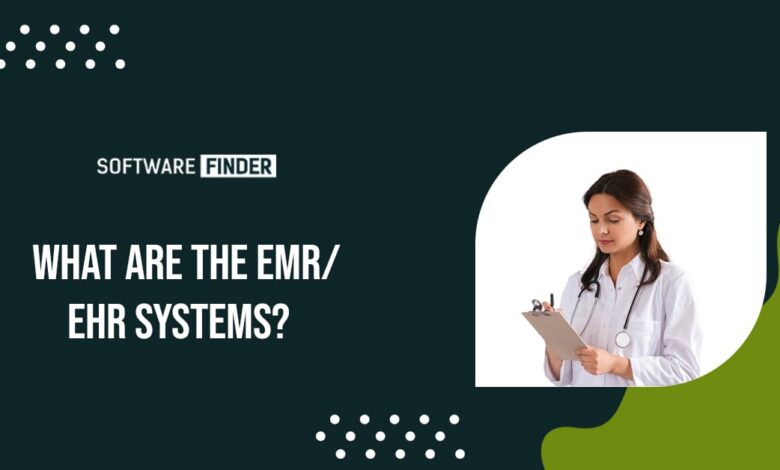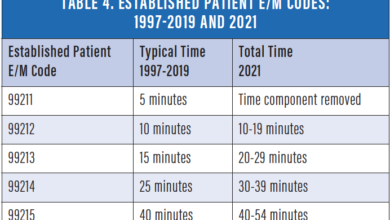What are the EMR/EHR systems?

Electronic Medical Records (EMRs) and Electronic Health Records (EHRs) are different but related systems for maintaining digital patient records in healthcare settings. This article will discuss the EMR/EHR systems in detail, including their definitions, differences, benefits, and challenges and discussion about top EMR/EHR systems such as NextGen EMR, EpicCare, Cerner etc.
What are EMRs?
EMRs are digital versions of a patient’s paper medical records created by healthcare providers for use within a single healthcare organization or practice. EMRs include data about a patient’s care at a certain healthcare facility or institution, such as medical and treatment histories, diagnoses, and treatment plans, as well as medication information and other relevant data.
EMRs are largely used to record clinical interactions and assist patient care and are often generated and maintained by healthcare providers like doctors, nurses, and administrative personnel. Since they offer a more effective way to store and manage patient data and potentially enhance patient outcomes through improved provider coordination and communication, EMRs have been widely adopted by healthcare organizations and practices.
What are EHRs?
EHRs, on the other hand, are digital records that contain a patient’s health information from multiple sources, including hospitals, clinics, pharmacies, and laboratories. EHRs offer a complete picture of their medical background no matter where a patient has received care.
EHRs are made to be shared between various healthcare organizations and providers, enabling better provider communication and care coordination. Additionally, EHRs give individuals access to their health data, empowering them to participate more actively in managing their health.
Differences between EMRs and EHRs:
EMRs are digital versions of the paper charts clinicians have used for years to record notes and other patient information. EHRs, on the other hand, are more comprehensive, containing a patient’s complete medical history from multiple sources, including medical and treatment histories, diagnoses, medications, allergies, lab results, and radiology images.
- Scope: While EHRs are intended to be shared across many healthcare organizations and providers, EMRs are typically designed for usage within a single healthcare organization or practice.
- Interoperability: While EHRs enable interoperability between providers and systems, EMRs are often not designed to share information with other healthcare providers or systems.
- Patient involvement: Through secure messaging, patient portals, and other features, EHRs can give patients access to, control over, and communication with their healthcare professionals. Typically, EMRs lack this feature.
- Analytics and Reporting: While EMRs are primarily utilized for patient care, EHRs are frequently used for data analysis, reporting, and population health management.
While EMRs and EHRs share many similarities, EHRs are generally more comprehensive, interoperable, and patient-centric than EMRs, making them better suited for use in modern healthcare systems.
Benefits of EMRs and EHRs:
EMRs and EHRs offer several benefits over traditional paper-based medical records. These include:
- Improved patient care: By giving healthcare professionals rapid and simple access to a patient’s medical history, prescriptions, allergies, and other crucial information, EMRs and EHRs can enhance patient care. This can aid medical professionals in making more informed choices and preventing mistakes.
- Efficiency improvement: By streamlining administrative activities like appointment scheduling, billing, and record-keeping, EMRs and EHRs can help healthcare professionals spend more time with patients and run their practices more effectively.
- Cost savings: EMRs and EHRs can help healthcare providers save money by reducing the need for paper-based record-keeping, minimizing medical errors, and improving the efficiency of administrative tasks.
- Improved patient outcomes: EMRs and EHRs can improve patient outcomes and lower the risk of medical errors by giving healthcare practitioners a more thorough picture of a patient’s medical history.
Challenges of EMRs and EHRs:
While EMRs and EHRs offer many benefits, they also present several challenges that healthcare providers and organizations must navigate. These challenges include:
- Privacy and security concerns: EMRs and EHRs are targets for hackers and cybercriminals because they include sensitive patient data. This raises privacy and security issues. Healthcare professionals must take appropriate measures to keep patient data safe and secure.
- Interoperability issues: Although EHRs are intended to be interoperable, numerous healthcare institutions and providers employ different systems, making it challenging to communicate data between providers. This may make it difficult to coordinate care and increase the risk of medical mistakes.
- Implementation costs: EMR and EHR implementation can be costly, requiring considerable outlays for hardware, software, and training. This can make it difficult for smaller healthcare facilities and practices to embrace.
- User adoption: EMRs and EHRs can be complicated, necessitating a lot of staff and provider training. This may make it difficult for users to embrace these technologies and lead to user resistance.
List Of A Few EHR And Emr available In Market
Many EMR and EHR systems are available in the market, each with unique features and benefits. Here are a few popular options:
- Epic Systems: Epic Systems is a leading provider of EHR systems for healthcare organizations of all sizes. Their highly customizable software includes features such as clinical decision support, a patient portal, and revenue cycle management.
- Cerner: Cerner is another popular provider of EHR systems, focusing on improving clinical workflows and care coordination. Their software includes features such as real-time clinical data, patient engagement tools, and analytics capabilities.
- Allscripts: Allscripts EMR offers a range of EHR solutions designed for small and large healthcare organizations. Their software includes features such as e-prescribing, patient portals, and population health management.
- NextGen: NextGen provides EHR solutions for various specialties, including primary care, behavioral health, and pediatrics. Their software includes features such as clinical decision support, patient engagement tools, and customizable templates.
- MEDITECH: MEDITECH offers EHR solutions for acute, ambulatory, and long-term care facilities. Their software includes mobile access, population health management, and telehealth capabilities.
- eClinicalWorks: eClinicalWorks provides cloud based EHR solutions for small to mid-sized healthcare organizations. Their software includes features such as customizable templates, e-prescribing, and revenue cycle management.
These are just a few examples of the many EMR and EHR systems available in the market. When choosing an EMR or EHR system, it is important to consider factors such as your organization’s size, specialty, workflow needs, and the system’s features, cost, and interoperability with other systems.
Conclusion:
EMRs and EHRs have revolutionized how healthcare professionals organize patient records and coordinate care. These technologies can enhance patient outcomes, boost efficiency, and cut costs by facilitating care coordination between clinicians and offering rapid and simple access to patient information.
EMR (Electronic Medical Record) and EHR (Electronic Health Record) systems are digital versions of patients’ medical records and healthcare data that are used to improve the efficiency and effectiveness of healthcare delivery. These systems have revolutionized the way medical information is stored, accessed, and shared among healthcare providers.
Healthcare organizations and providers must also deal with several obstacles posed by EMRs and EHRs, such as user adoption issues, interoperability problems, privacy and security concerns, and implementation costs. EMRs and EHRs will likely play a bigger part in improving patient outcomes and fostering innovation in the healthcare sector as medicine develops.
Many healthcare organizations have put plans in place to better the adoption and usage of EMRs and EHRs to overcome these difficulties. These tactics include investing in cybersecurity and data protection measures, guaranteeing the interoperability of various systems, and training and supporting healthcare professionals and personnel.
Additionally, ongoing attempts are being made to standardize EHR systems in order to enhance interoperability and enable the smooth sharing of patient data between various healthcare institutions and providers. The Office of the National Coordinator for Health Information Technology (ONC), for instance, has set certification standards for EHR systems to guarantee they fulfil specific functionality, interoperability, and security requirements.
For managing patient records and coordinating care in contemporary healthcare, EMRs and EHRs are crucial. Despite the difficulties they pose, their advantages in terms of improving patient outcomes, boosting productivity, and cutting costs cannot be overlooked. To raise the caliber and effectiveness of patient care, healthcare organizations and providers must continue to invest in these technologies, create plans to deal with the difficulties they provide, and move towards standardization and interoperability.
Still confused?
Do you have questions concerning the EMR and EHR? Software Finder aims to simplify the software discovery process for businesses by providing personalized recommendations based on user requirements and preferences. They offer tailored guidance to aid each business in selecting the best software, and their database contains up-to-date, accurate reviews from actual users.
To contact Software Finder, dial (661) 384-7070 or email info@softwarefinder.com.



